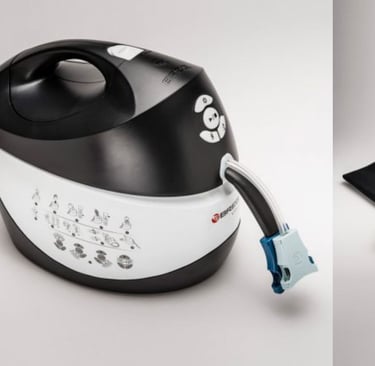The Benefits of Cold Compression Therapy in Post-Surgical Recovery for Orthopedic Patients
10/31/20252 min read


Introduction to Cold Compression Therapy
Post-surgical recovery is a crucial phase that plays a significant role in determining the overall outcome for orthopedic patients. One of the most effective methods gaining traction among orthopedic surgeons is cold compression therapy. This technique combines the therapeutic effects of cold application and compression, leading to enhanced recovery post-surgery.
Reduction of Swelling and Pain
One of the primary benefits of using cold compression for post-surgical recovery is the notable reduction in swelling and pain. Cold therapy works by constricting blood vessels and lowering metabolic activity in the affected area, leading to decreased blood flow and alleviation of inflammation. Coupled with compression, which helps to limit fluid accumulation, patients often experience significant relief from the acute pain associated with orthopedic procedures. Studies have shown that cold compression can lead to faster recovery times as it minimizes the pain and discomfort that typically arise after surgery.
Improvement in Mobility and Functionality
Another important advantage of cold compression therapy is its role in improving mobility and restoring functionality. After orthopedic surgeries, patients often struggle with stiffness and limited range of motion. The combination of cooling and gentle compression assists in relaxing tight muscles and enhances blood circulation to the area, promoting quicker healing. As a result, patients can resume physical therapy sooner, which is essential for regaining strength and mobility. In many cases, this leads to better surgical outcomes and overall patient satisfaction.
Enhanced Patient Compliance and Satisfaction
Using cold compression therapy is not only effective but also contributes to enhanced patient compliance and satisfaction. Traditional methods such as ice packs often require continuous attention and can be cumbersome to apply. In contrast, modern cold compression devices are user-friendly and designed for convenience, allowing patients to administer therapy independently without assistance. Such ease of use often results in higher adherence rates to post-surgical care recommendations. Consequently, patients report a better overall experience during their recovery phase, particularly with respect to their pain management protocol.
Conclusion
In conclusion, cold compression therapy is becoming a staple in the recovery protocol for orthopedic patients. By effectively reducing swelling and pain, improving mobility, and increasing patient satisfaction, orthopedic surgeons are recognizing the value of this non-invasive technique. As further research continues to validate its benefits, cold compression therapy is likely to become a standard recommendation in post-surgical recovery plans.
Connect
Copyright © 2025 MedX Sales Ltd. All rights reserved.
